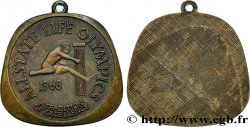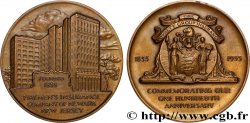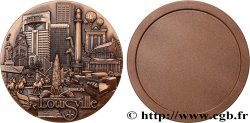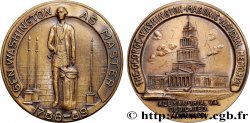fme_774745 - UNITED STATES OF AMERICA Médaille, Charles William Eliot, Président de Harvard
Not available.
Item sold on our e-shop (2025)
Price : 150.00 €
Item sold on our e-shop (2025)
Price : 150.00 €
Type : Médaille, Charles William Eliot, Président de Harvard
Date: 1907
Metal : bronze
Diameter : 80,5 mm
Orientation dies : 12 h.
Weight : 182,69 g.
Edge : lisse + triangle BRONZE
Puncheon : Triangle BRONZE
Coments on the condition:
Patine hétérogène, des taches noires d’oxydation et une petite usure sur les reliefs. Présence de quelques rayures
Obverse
Obverse legend : CHARLES WILLIAM ELIOT PRESIDENT OF HARVARD UNIVERSITY.
Obverse description : Buste habillé de profil à gauche, signé : LEON DESCHAMPS.
Reverse
Reverse legend : SIGILLVM ACADEMIAE HARVARDIANAE IN NOVANG.
Reverse description : Vue sur la façade de l’académie avec sa grille. Médaillon à l’exergue. Signé : L. DESCHAMPS - MCM VII.
Commentary
La médaille est conservée dans sa boîte d’origine verte, avec feutrine bordeaux, timbrée en lettres dorées : MEDAL / OF / CHARLES WILLIAM ELIOT / PRESIDENT OF HARVARD UNIVERSITY / - / DESIGNED BY / LEON DESCHAMPS / - / EXECUTED BY THE FRENCH MINT / 1907.
Charles William Eliot (1834-1926) est un académicien américain sélectionné pour être le président d’Harvard en 1869, et ce jusqu’en 1909. Il transforma ce collège de province en l’un des plus grands centres de recherche universitaire.
Charles William Eliot (1834-1926) est un académicien américain sélectionné pour être le président d’Harvard en 1869, et ce jusqu’en 1909. Il transforma ce collège de province en l’un des plus grands centres de recherche universitaire.








 Report a mistake
Report a mistake Print the page
Print the page Share my selection
Share my selection Ask a question
Ask a question Consign / sell
Consign / sell
 Full data
Full data









